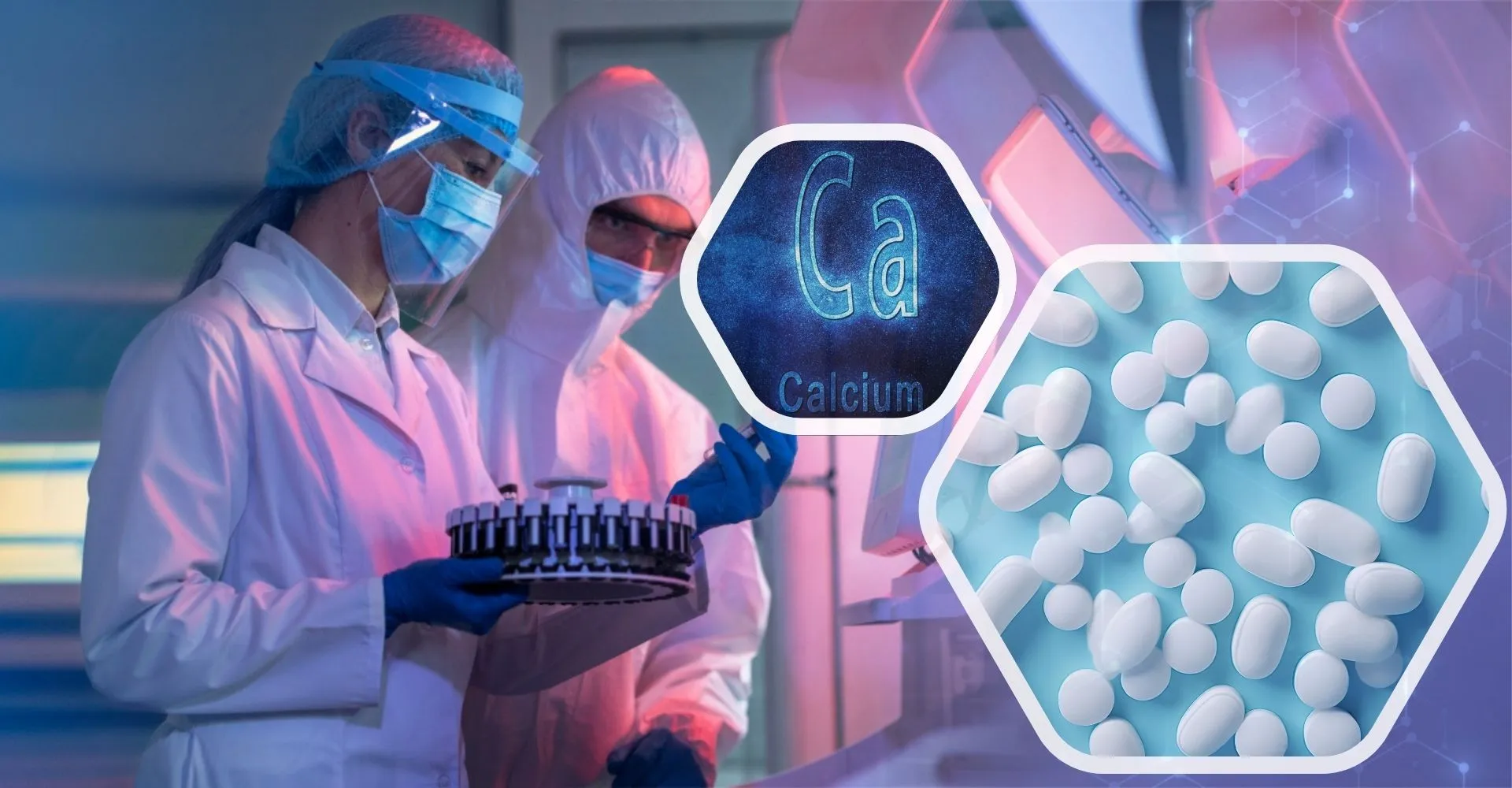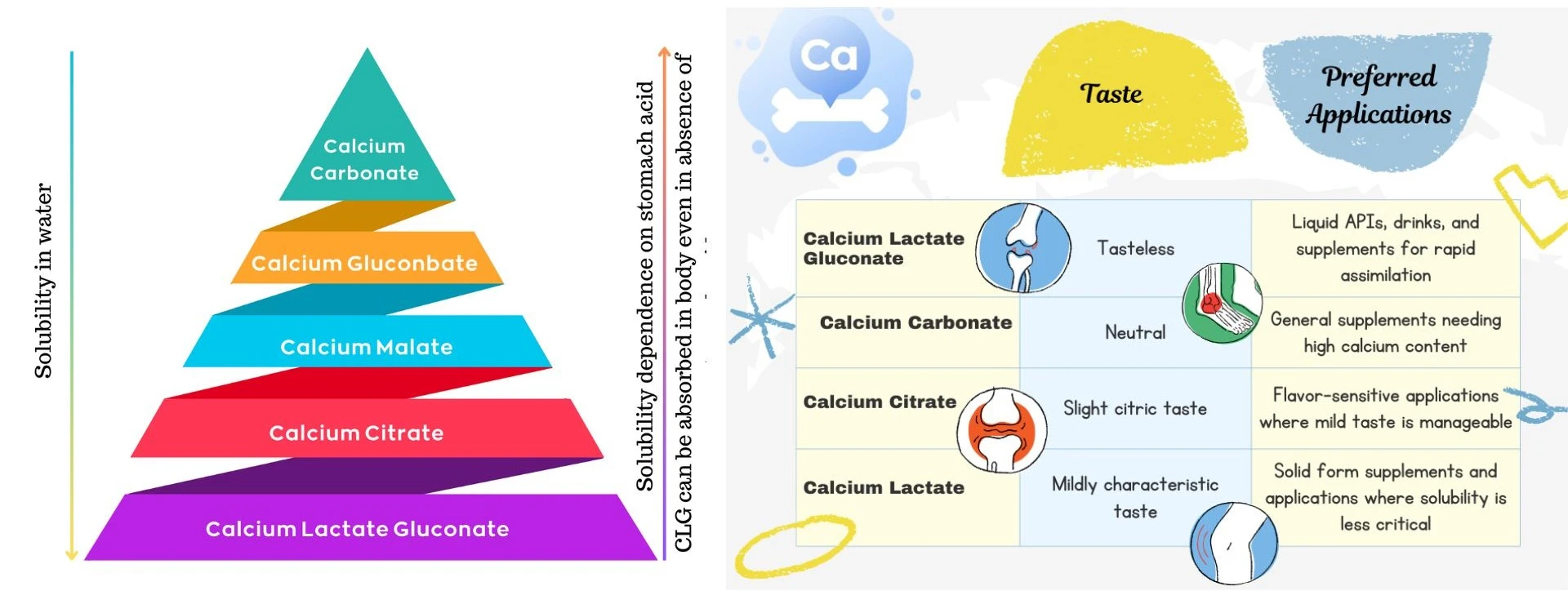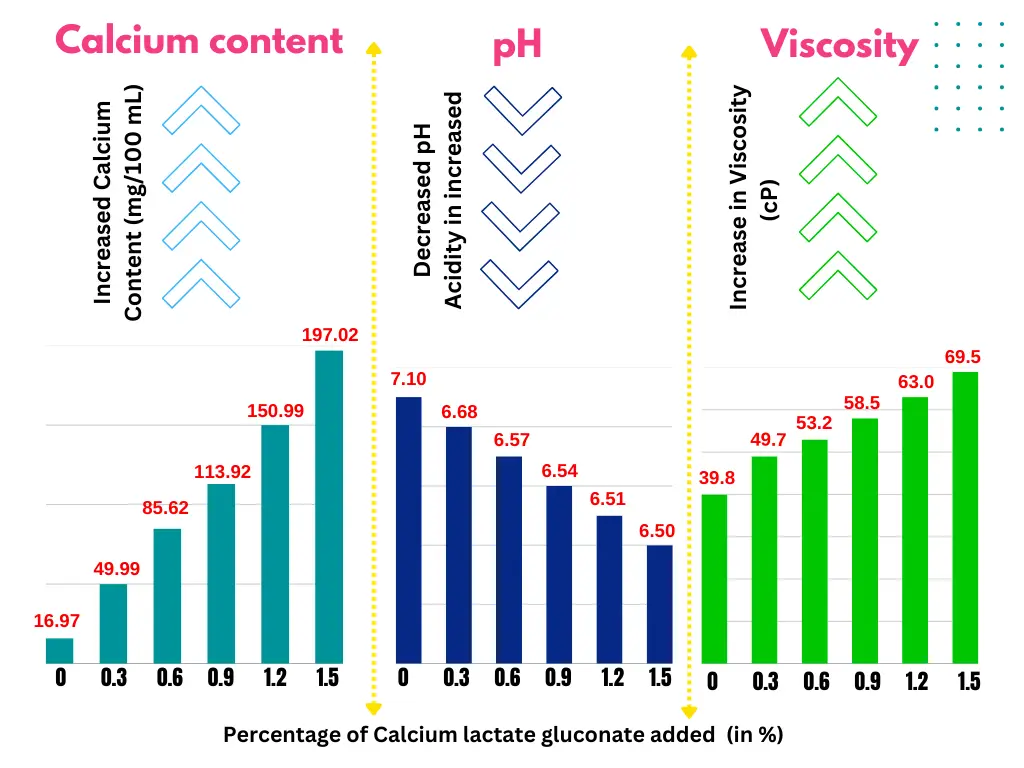Why Calcium Lactate Gluconate is the Superior Choice for Calcium Supplementation?
Introduction
Calcium is a vital mineral that plays crucial roles in the body, from bone health to muscle function. Today, we delve into one of the newer and more effective forms of calcium supplementation: Calcium Lactate Gluconate (CLG). Calcium is located in Group 2 of the periodic table and it comprises the alkaline earth metals. These elements are characterized by their softness, silvery color, and relatively low density compared to other metals. With a myriad of calcium supplements available in the market, it can be quite overwhelming to choose the right one.
What is Calcium Lactate Gluconate?
Calcium Lactate Gluconate or Calcium Gluconolactate is a soluble form of calcium that is synthesized by mixing calcium lactate and calcium gluconate. This unique synthesized formulation is designed to enhance calcium absorption in the body, making it an excellent choice for those who need to boost their calcium intake.
Chemical composition
Chemical Structure: Calcium Lactogluconate has the chemical formula C₉H₁₈CaO₁₀.
Calcium Content: It is a good source of elemental calcium, which is an essential mineral for various physiological functions, including bone health, muscle function, blood clotting, and nerve transmission.
Solubility: Calcium Lactate Gluconate is water-soluble, which means it can be easily dissolved in water, making it convenient for use in liquid formulations or supplements. Calcium Lactogluconate appears as a white, crystalline powder that is both odourless and tasteless.5 It is non-toxic and exhibits outstanding physiological compatibility.
Bioavailability: It is known for its relatively high bioavailability, meaning that a significant proportion of the ingested calcium can be absorbed by the body. This makes it an effective form of calcium supplementation.2

Uses:
- Dietary Supplement: Calcium Lactate Gluconate is commonly used in the formulation of dietary supplements to provide a source of easily absorbable calcium.
- Food Additive: when it comes to food additive, GLOCAL is also used as a food additive in certain products, serving as a calcium fortifier.
- Absorption in the Body: Calcium Lactate Gluconate is generally well-absorbed in the gastrointestinal tract. The combination of lactic acid and gluconic acid may contribute to its bioavailability.
- Calcium Deficiency Treatment: It is prescribed for individuals with calcium deficiency, a condition that can lead to osteoporosis, muscle spasms, and other health issues.
- Pregnancy and Lactation: Calcium requirements increase during pregnancy and lactation. Calcium Lactate Gluconate may be recommended to pregnant women or breastfeeding mothers to meet their increased calcium needs.
Benefits of Calcium Lactate Gluconate
- One of the standout features of CLG is its high bioavailability, which refers to the rate and extent to which the body absorbs and utilizes the calcium. This means more calcium is available for the body to use, which is particularly beneficial for bone health and preventing osteoporosis.
- Some calcium supplements can cause gastrointestinal discomfort such as bloating or constipation. However, CLG is known for being gentle on the stomach, which is a significant advantage for those who may be sensitive to other forms of calcium.
- In the case of soy-corn milk, which may have a naturally low calcium content, fortification with CLG helps increase the overall calcium concentration. This is crucial for individuals aiming to maintain optimal bone health and prevent conditions such as osteoporosis.3
- CLG, when added to plant-based beverages like soy-corn milk, provides an alternative and accessible source of calcium for individuals with dietary restrictions or preferences. It allows them to meet their calcium needs without relying on dairy products.
- Calcium is essential for various physiological functions, including bone health, muscle function, and nerve transmission. By fortifying soy-corn milk with CLG, the beverage becomes a more nutritionally valuable option, contributing to overall dietary calcium intake.
- The addition of CLG for calcium fortification allows the enhancement of the nutritional content without compromising the taste of beverages. It ensures that individuals find the fortified product edible and are more likely to incorporate it into their diet.
Solubility
- Calcium Lactate Gluconate is a water-soluble compound.4
- The solubility of Calcium Lactate Gluconate in water is generally high, making it suitable for use in liquid formulations, dietary supplements, and food products.
- This solubility is a desirable characteristic as it allows for better absorption of calcium in the gastrointestinal tract when consumed.
- In general, calcium compounds tend to be more soluble in acidic environments. Therefore, Calcium Lactate Gluconate is likely to dissolve well in water and other aqueous solutions, particularly those with a mildly acidic to neutral pH range.
How Does It Compare to Other Calcium Supplements?
While traditional calcium supplements like calcium carbonate and calcium citrate are effective, they come with their own set of challenges, including lower absorption rates and potential gastrointestinal issues. Calcium carbonate, for instance, requires a highly acidic environment for optimal absorption, which might not be suitable for everyone. Calcium citrate, though better absorbed, is more expensive and often requires larger dosages. In contrast, Calcium Lactate Gluconate offers a balanced approach with good absorption and minimal side effects, making it a preferable option for many.
Calcium Lactate Gluconate vs. Calcium Lactate
It is true that because calcium lactate gluconate is more water-soluble, its absorption by the body is increased; therefore, it is preferred to be included in liquid APIs and drinks needing rapid assimilation.
Calcium Lactate Gluconate vs Calcium Carbonate
Although it has a high calcium concentration, calcium carbonate must be absorbed through stomach acid. GLOCAL, or calcium lactogluconate, on the other hand, is more readily absorbed and doesn’t require stomach acid, which makes it appropriate for a wider spectrum of people, including those on acid reducers.6
Calcium Lactate Gluconate vs. Calcium Citrate
In applications where taste is important, calcium lactate gluconate may be preferred over calcium citrate because the latter has no taste.

Clinical studies
Antiosteoporotic effects of Polycan in combination with calcium lactate-gluconate:
Osteoporosis is a condition characterized by an imbalance between bone resorption and formation, leading to bone loss and fractures. The oestrogen-deficient ovariectomy (OVX) model, which mimics postmenopausal bone loss, is commonly used to test osteoporosis treatments and is endorsed by the FDA for evaluating the safety and efficacy of these therapies. Research has shown that the optimal combination of Polycan (a β-glucan complex) and calcium lactate-gluconate (CaLG) is particularly effective in treating osteoporosis in OVX rats. In a study, Polycan and CaLG were administered individually (100 mg/kg) and in mixed doses (50, 100, and 200 mg/kg) at different ratios (1:99, 5:95, and 10:90 of Polycan to CaLG) daily for 84 days. Both the single and mixed formulas helped preserve bone mass and strength in the osteoporotic rats.4
| Trabecular bone volume (%) | Trabecular bone number (n) | Trabecular bone length (mm) | Trabecular bone thickness (um) | Osteoclast cell number (n) | |
| Single formula (100 mg/kg) CaLG | 32.27±2.46 | 15.88±1.96 | 5.37±0.56 | 305.26±37.91 | 26.13±3.36 |
Table: Histomorphometry of the femur after 84 days of repeated oral administration of test materials in osteoporotic rats
(Source: Choi et al., 2014)
Effects of Calcium Fortification (Calcium Lactate Gluconate) on the Physicochemical and Sensory Properties of Soy-Corn Milk:
Osteoporosis is a significant global health issue, and maintaining adequate calcium intake through diet is crucial for its prevention. Soy-corn milk, which is more palatable than plain soy milk but has low calcium content (16.97 mg/100 mL), has been considered for calcium fortification to make it suitable for lacto-vegetarians and those who are lactose intolerant. Research focused on fortifying soy-corn milk with calcium lactate gluconate (CLG) at levels ranging from 0.3% to 1.5%. The studies found that calcium content in the milk increased proportionally with the amount of CLG added. Optimal results were observed at a 0.6% fortification level, where the fortified soy-corn milk had a pH of 6.54, a calcium content of 85.62 mg/100 mL, a viscosity of 53.2 cP, and favorable sensory properties in terms of consistency and taste compared to the unfortified version.3
| Calcium lactate gluconate (%) | Calcium Content (mg/100 mL) |
| 0% | 16.97 |
| 0.3% | 49.99 |
| 0.6% | 85.62 |
| 0.9% | 113.92 |
| 1.2% | 150.99 |
| 1.5% | 197.02 |
Table: Effect of CLG on Calcium content [in Milk]
(Source: Elian et al., 2012)
| Calcium lactate gluconate (%) | pH |
| 0% | 7.10 |
| 0.3% | 6.68 |
| 0.6% | 6.57 |
| 0.9% | 6.54 |
| 1.2% | 6.51 |
| 1.5% | 6.50 |
Table: Effect of CLG on pH
(Source: Elian et al., 2012)
| Calcium lactate gluconate (%) | Viscosity (cP) |
| 0% | 39.8 |
| 0.3% | 49.7 |
| 0.6% | 53.2 |
| 0.9% | 58.5 |
| 1.2% | 63.0 |
| 1.5% | 69.5 |
Table: Effect of CLG on Viscosity
(Source: Elian et al., 2012)

Wrapping up!
Calcium Lactate Gluconate (CLG) emerges as a superior choice for calcium supplementation due to its high bioavailability and solubility, ensuring effective absorption and minimal gastrointestinal discomfort. Particularly beneficial for individuals with dietary restrictions or sensitivities, CLG not only supports bone health and various physiological functions but also proves to be a versatile food additive, enhancing the nutritional value of beverages like soy-corn milk without compromising taste. By fortifying foods with CLG, individuals can significantly boost their calcium intake, supporting bone health and reducing the risk of osteoporosis, thereby offering a practical solution for maintaining optimal calcium levels in a variety of dietary contexts.
Why choose WBCIL?
With over 62 years of experience and a flexible approach, WBCIL meets the evolving needs of its global clients. WBCIL is one of the best Calcium lactate Gluconate (CLG) manufacturers in India. Choose WBCIL and you will get optimal purity to maximize your lease’s advantages. We are a reliable producer dedicating to offering consumers exceptional quality and formulation every time. We also offer customization. Our top-of-the-line facilities and quality assurance checks ensure that your purchase will abide to even the most rigorous business requirements.
-
PubChem [Internet]. Bethesda (MD): National Library of Medicine (US), National Center for Biotechnology Information; 2004-. PubChem Compound Summary for CID 76963631, Calcium lactate gluconate anhydrous; [cited 2024 Apr. 18]. Available from: https://pubchem.ncbi.nlm.nih.gov/compound/Calcium-lactate-gluconate-anhydrous
-
Trailokya A, Srivastava A, Bhole M, Zalte N. Calcium and Calcium Salts. J Assoc Physicians India. 2017 Feb;65(2):100-103. PMID: 28457049. https://www.researchgate.net/profile/Nitin-Zalte/publication/313717335_Calcium_and_Calcium_Salts/links/5b4db379aca27217ff9b5da5/Calcium-and-Calcium-Salts.pdf
-
Elian M, Srianta I, Trisnawati CY, Arisasmita JH. Effects of calcium fortification (calcium lactate gluconate) on the physicochemical and sensory properties of soy-corn milk. International Journal of Food, Nutrition and Public Health. 2012;5(1/2/3):91-104. http://repository.ukwms.ac.id/id/eprint/11237/12/4-Effects_of_Calcium_Hasil_Cek_Turnitin.pdf
-
Choi JS, Kim JW, Kim KY, Cho HR, Choi IS, Ku SK. Antiosteoporotic effects of Polycan in combination with calcium lactate-gluconate in ovariectomized rats. Exp Ther Med. 2014 Sep;8(3):957-967. doi: 10.3892/etm.2014.1793. Epub 2014 Jun 20. PMID: 25120630; PMCID: PMC4113539. https://www.ncbi.nlm.nih.gov/pmc/articles/PMC4113539/
-
FaNBIoM, Standing Committee on the Scientific Evaluation of Dietary Reference Intakes, “Dietary Reference Intakes for Calcium, Phosphorus, Magnesium, Vitamin D and Fluoride,” 1997. https://www.ncbi.nlm.nih.gov/pmc/articles/PMC5112013/
This is especially useful for people who may not obtain enough calcium from their diet. It also assists with proper muscle and heart function and nerve transmission. Calcium lactate gluconate is often chosen because of its solubility and bioavailability, hence the body can more efficiently absorb it than from some other calcium salts.
Calcium lactate gluconate is generally described as having a mild, slightly sweet taste.
West Bengal Chemical Industries Limited is one of the top manufacturers of Calcium Lactate gluconate. Do contact our executives for more information.
Calcium lactate gluconate is not typically used as a preservative. It is primarily used as a calcium fortifier in various food and beverage products to enhance calcium content.
Calcium lactate gluconate works by dissolving easily in the body. It releases calcium ions that are essential for muscle, nerve function, and bone strength. This soluble form allows for better absorption of calcium compared to other compounds.
Yes! Calcium Lactate gluconate is safe if it is consumed in a right way.
Calcium lactate gluconate is popular due to its high solubility and bioavailability, allowing for effective absorption even in liquid formulations.
Calcium lactate gluconate produced by WBCIL is absorbed relatively quickly by the body due to its high solubility in water.
